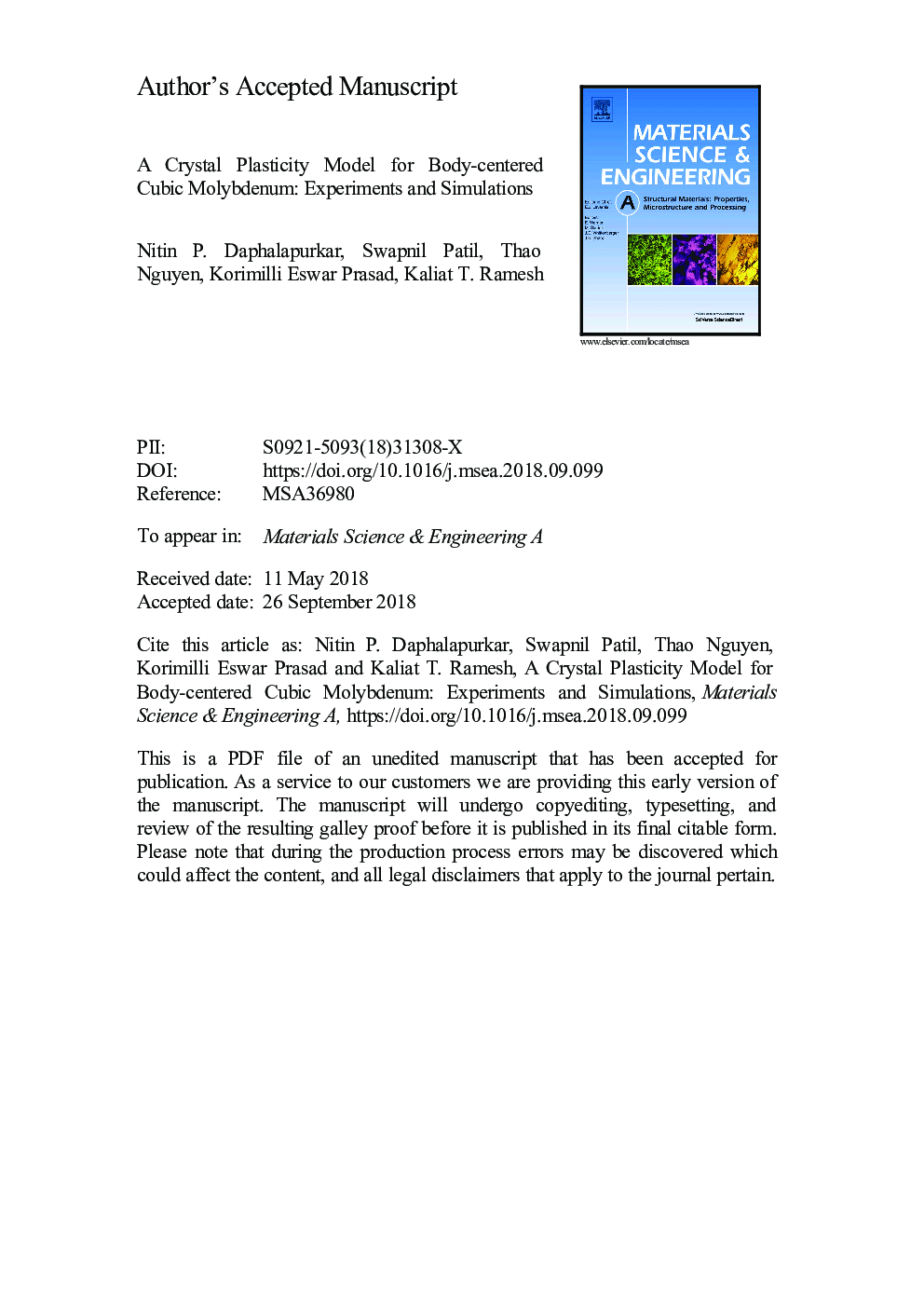| Article ID | Journal | Published Year | Pages | File Type |
|---|---|---|---|---|
| 11001654 | Materials Science and Engineering: A | 2018 | 42 Pages |
Abstract
A physics-based finite strain crystal plasticity constitutive model for body-centered-cubic (BCC) single crystals is developed to capture the strong temperature, rate, and orientation dependence of mechanical behavior. The key features of the model include twinning-anti-twinning asymmetry of shearing resistance, a yield criterion that incorporates atomistics-informed non-Schmid effects, and a flow rule formulated based on the theory of thermally activated motion of screw dislocations via nucleation of double kinks. The implementation of the constitutive model in a finite-element program is briefly discussed. The material constants in the model are determined by calibrating the model against literature-based experimental data on single-crystal Molybdenum subjected to uniaxial compression and uniaxial tension. Experiments of uniaxial compression on a single crystal specimen with a hole were performed for validation of the calibrated model for BCC Molybdenum. Measurements of deformations in the vicinity of the hole were used to assess the ability of the model in predicting localized deformation patterns around the hole. The model is able to effectively describe the anisotropic and temperature-dependent stress-strain response of a molybdenum crystal up to a homologous temperature of 0.3.
Related Topics
Physical Sciences and Engineering
Materials Science
Materials Science (General)
Authors
Nitin P. Daphalapurkar, Swapnil Patil, Thao Nguyen, Korimilli Eswar Prasad, Kaliat T. Ramesh,
